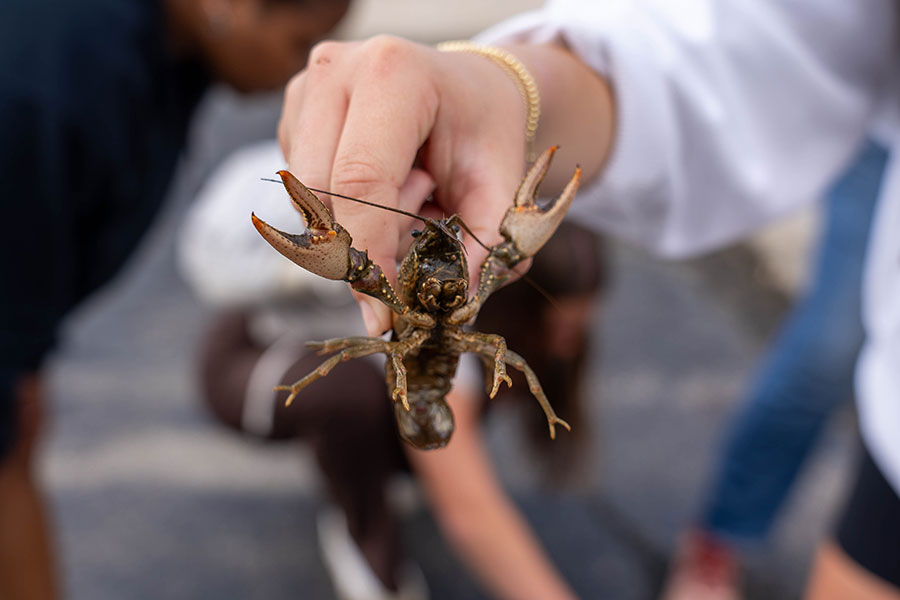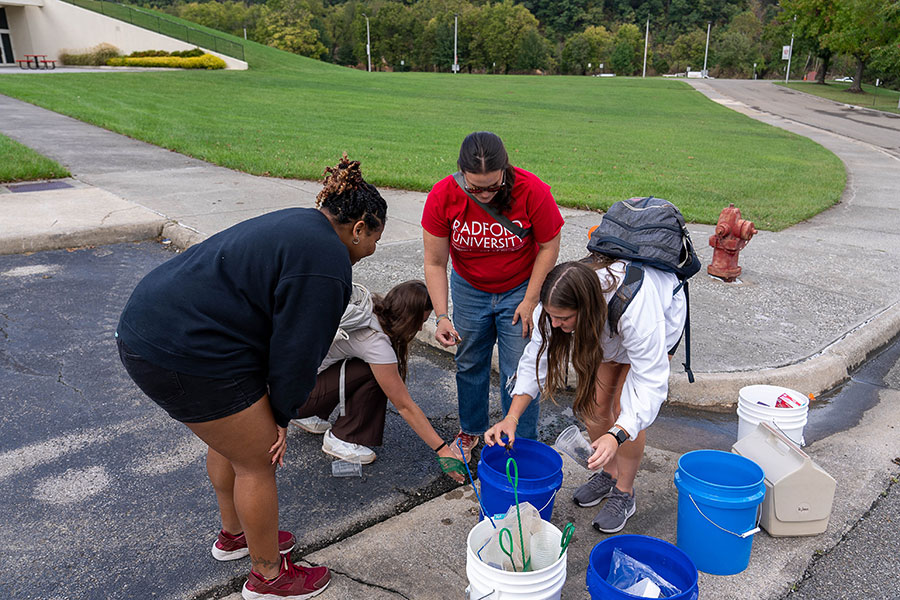Recent flooding caused by remnants of Hurricane Helene stranded many aquatic species,
including crawfish, on land far from the New River.
A few days after the flooding, Professor of Biology Sara O’Brien, Ph.D., took students
in her Endocrinology Lab (BIOL 478) to sample displaced crawfish for hormones and
microplastics.
These organisms allowed O’Brien’s students to explore how unpredictable events like
hurricanes impact surrounding wildlife. With proper permits in place, the professor
and her team of student researchers gathered crawfish to explore changes in their
physiology due to their displacement.
The student research team also collected samples to explore the presence and abundance
of microplastics in these normally territorial underwater sediment dwellers.
Joining the group was Associate Professor Jamie Lau, chair of the biology department,
who collected 20 stream bank sediment samples along a 1.2-mile stretch along the New
River at Bisset Park.
“Our goal is to determine whether microplastics (MPs) in riverbeds were displaced
by the floodwaters and settled along the stream bank as the water receded,” Lau said
while noting that she, O’Brien, and their undergraduate research students will later
look for how the concentration of microplastics changes when the riverbanks settle
back to normal depth.
“We are expecting a high concentration of MPs in these initial samples, and we expect
the concentration to decrease over time,” Lau explained. “We are studying MPs because
they are ecologically and physiologically connected. The MPs can be mistaken for a
food source, which would be consequential to organisms that ingest them. More to come
as we process the samples.”
While working along the river, O’Brien and her students talked with Virginia Lt. Gov.
Winsome Earle-Sears and Del. Jason Ballard, who were touring areas around Radford
University impacted by flooding.
“This opportunity allowed students to use what they are learning in the classroom
to explore the impacts of Hurricane Helene on our Virginian wildlife in real time,”
O’Brien said. “Because of the pressures of climate change, our tight-knit Appalachian
communities and our unique Appalachian ecosystems will continue to be challenged,
but here at Radford, we are working to train our future scientists to address these
challenges."
Once scientific sampling was completed, O’Brien and her students used the rest of
the laboratory period to hand-rescue as many of the stranded fish and crawfish as
they could, returning them to the river.
Radford University offers an education that encourages active participation, challenges
students from the outset and provides early access to industry-aligned opportunities.
As early as their freshman year, students get hands-on experience, conduct research
and run simulations that go beyond what many internships or co-ops even offer. We
bring the real world to our students on campus. Regardless of their major, every student
at Radford University can engage in career-driven experiences that connect them meaningfully
to their future profession.


